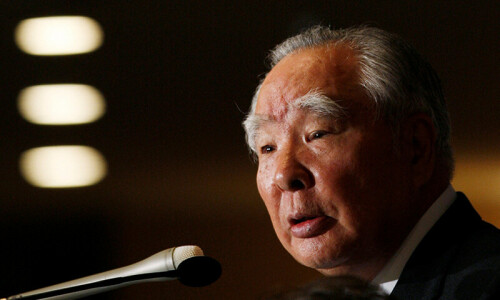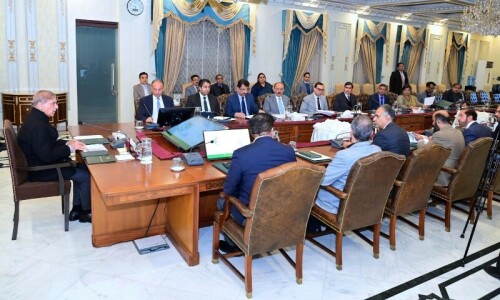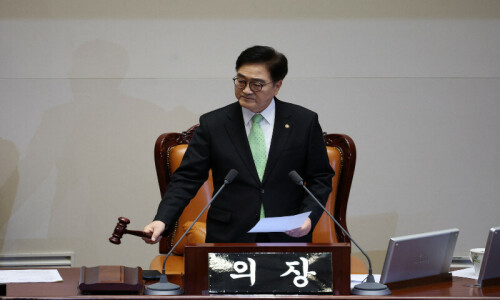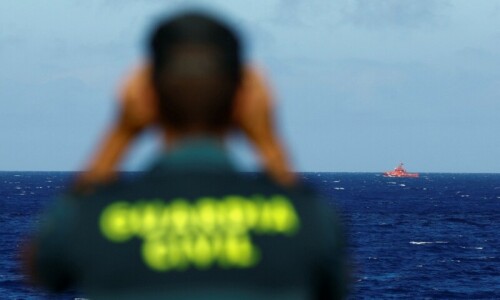KARACHI, Jan 6: Official trade statistics are set to become a focus of controversy again as a loud whisper moving in the business circles questions the credibility of $16.45 billion export achievement in the year 2005-06 on the basis of which an official export target of $18.6 billion has been fixed for the current fiscal year.
“Last year’s export figures include more than $1 billion export of leather garments and other textile products to South Africa, UAE and some parts which were false and bogus,” a senior leader of leather industry disclosed.
According to him no shipment was made and the fraud committed by a well-known exporter in nexus with officials of the Central Board of Revenue was detected and the case was registered. The exporter also a former employee of the CBR was arrested and he is facing a trial. His contention is that export goods were duly cleared by the Customs on rates shown in the documents and proceeds have been received. In the year 2005-06, the government introduced six per cent research and development rebate to the readymade garment and knitwear exporters against which a substantial amount was paid.
A newspaper quoted State Bank of Pakistan Governor Dr Shamshad Akhtar in Faisalabad sometimes in November 2006 that 3,000 cases of false declaration have been detected. There had been no follow up statement of this disclosure from the State Bank or any official agency.
“Pakistan has more than four decades long history of false and bogus rebate claims by the exporters,” alleged a textile tycoon involved in the business for last more than 40 years. Late Ghulam Ishaq Khan, when he held the charge of commerce ministry in early 1980s, exposed the exporters at an Export Promotion Council meeting in Karachi with specific examples that led a large number of exporters to hang their heads in shame. The All Pakistan Textile Mills Association too launched newspaper advertisement campaigns against exporters of value added textile to show that rebate claim amounts exceeded the actual exports.
“Now that we are back in the export rebate business on a much wider scale and subsidies on bank loans and on freight, the volume of bogus and fictitious exports is bound to jump,” said a businessman. Most of the businessmen are convinced that last year’s actual exports were hardly $15 billion. They are convinced that the export target of $18.6 billion fixed for the current fiscal year is unrealistic and unachievable.
The last five months export statistics (July to November 2006-07) show conspicuously negative signs before more than 30 items but show 953 million dollars export earnings against “other exports”. Total export in this five months period amounts to $6.9 billion. Almost one-seventh of this total exports beg for description. In final counts the amount of “other exports” is expected to be close to $2 billion.
As the Customs or the Pakistan Revenue Authority Limited (PRAL), the private sector data collecting arm of the CBR manipulates with export figures, it does so with imports also where the value of imports in last five months is close to $1.5 billion. The CBR does not give any details of miscellaneous or other importers.
None of the trade body, right from the apex trade body, the Federation of Pakistan Chambers of Commerce and Industry to regional chambers or trade associations ever tried to carry out a periodical analysis of commodities and goods and markets and link up the results with government’s taxation policies or monetary strategy to inform general public. Exporters who ask for concessions, subsidies and rebates have their own explanation. “During the first couple of years of the new millennium, exporters were getting Rs68 per one US dollar based on the then prevailing exchange rate plus a duty drawback ranging from 6 to 8 per cent,” argues one such exporter in e-mail presentation.
The duty drawbacks were withdrawn at a very sensitive time after 9/11 when customers were already running away from Pakistan. At the same time strengthening or revaluation of the rupee-dollar parity brought down to Rs57 a US dollar.
“This was a direct loss of 16 per cent for the exporters,” he asserts while pointing out that even today the exports are off by nearly 10 per cent over 2001 on a straight line basis without taking into consideration any other cost increase in the last five years.
The exporter has complained of the four years inflation hurting the business and the export but has failed to take note of the impact of more than Rs25 billion concession package given to textile exports and impact of swapping of expensive loans with concessions rated loans and almost across the board rebates on textile exports. And then the question is who pays for the abuse of these rebates and concessions by unscrupulous traders.















































Dear visitor, the comments section is undergoing an overhaul and will return soon.